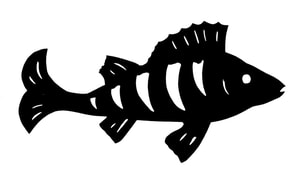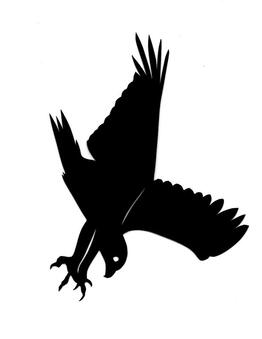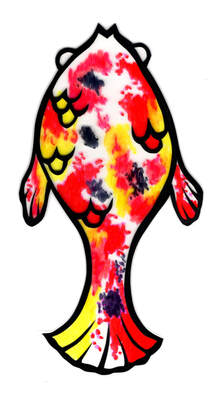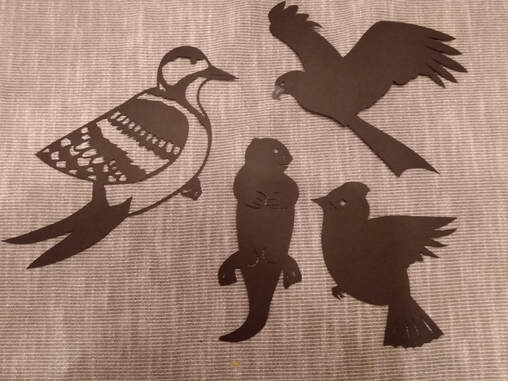 A paper perch A paper perch Komm, Jesu, komm is possibly Bach’s most tender and passionate motet. It is another funeral motet, but we don’t know for whom, though it may have been written for the funeral of the theologian Johann Schmid who died in 1731. We do know that the motet was written sometime before 1732 in Leipzig. There is no autograph of this motet, and the only reason we have it at all is because Christoph Nichelmann, a student of Bach’s and accomplished composer in his own right, copied it in 1732. The poet of the text, Paul Thymich, a professor at the Thomasschule where Bach was cantor, wrote the poem for another funeral, that of the philosopher Jakob Thomasius in 1684. On that occasion Johann Schelle, Bach’s predecessor as cantor, composed the music to this text. Schelle’s work is fairly simple for one choir in five voices, but uses the whole text. Bach’s version uses only the first and last stanzas and spins those out mainly in double choir format through several sections and variations. The longest section accompanies the words “du bist der rechte Weg, die Wahrheit, und das Leben,” or “you are the way, the truth, and the life,” and is an extended back and forth between choir one and choir two. You can hear Schelle’s version here and follow along with the score.  A diving osprey A diving osprey This is also one of Bach’s more “modern” sounding works. It looks forward to the gallant style in its dance-like singability with focus on underscoring the meaning of the text above all musical tricks. Instead of ending with a chorale it ends with an “aria” which highlights this singability. Initially this aria always sounded very chorale-like to me because of the way each phrase ends with a fermata, but when you analyze it a little more it becomes apparent how different it is. Chorales usually only have one note per syllable moving mainly in a step wise fashion, while this aria has leaps and scales, several notes to a syllable in places. It’s slightly more florid than a chorale, more passionate. It is truly an aria for choir. Performing such a modern sounding motet at a German funeral was something of a rarity and leads musicologist Martin Geck to wonder if it was composed specifically for someone who was known to be a fan of more forward looking music. You can read an extended discussion of this motet here. Here is the text in German and translated into English as used by Bach:
This is one of several motets by Bach for double choir, but due to the back and forth nature of the choirs in the “du bist der rechte Weg” part I’ve decided to divide the puppet screen to show how the two choirs are separate but come together at the end.  One of the guru fish One of the guru fish We follow two goldfish as they flop around on the bathroom floor, fall into the drain, struggle through the house pipes, then the main water line, and through the sewers. The sewers follow “der saure Weg,” or “the bitter way,” and the fish meet several strange and creepy creatures there, including a cockamouse and the Loveland Frogman. The goldfish splash out of the sewer and end up in the river (the Elbe on one side and the Rhine on the other, two German rivers that lead to the sea) where they are met by two colorful koi who I call guru fish. The gurus set them off on the right path to follow the river and get out of the way of the bubbling sewage. As the choir trades off singing “du bist der rechte Weg,” or “you are the right way,” various river creatures make an appearance to accompany the goldfish on part of their journey. These creatures vary from mammals to birds, to other fish. In fact this motet contains more puppets than the other two due to the split screen aspect, but they mostly make brief appearances. This part of the motet is extremely lulling and meditative. In fact I found it kind of boring before, but after practicing the timing of the scroll over and over I discovered what this music really is. It’s a meditation, and what better way to enjoy a meditative trance than to follow the river? Eventually both the Elbe and the Rhine empty out into the same place: the North Sea. As the aria begins the split in the screen disappears. The choir comes together as one, and the rivers become one sea. The guru koi come back to lead the goldfish into the sunset. I love that Komm, Jesu, komm is the one motet that is so very much about pathways, making it fairly emblematic of the entire motet puppet project as a whole. I invite you to imagine these guru fish as any spiritual or philosophical leaders who appeal to you be they Jesus, Buddha, a wise teacher, a spirit guide, or even Karl Marx.
0 Comments
Leave a Reply. |
AuthorHi, Juliana Brandon here. This is where I let you peek behind the scenes here at Paper Puppet Opera. See works in progress, rehearsal snippets, and learn more about the history behind each production. Archives
March 2023
Categories |


 RSS Feed
RSS Feed